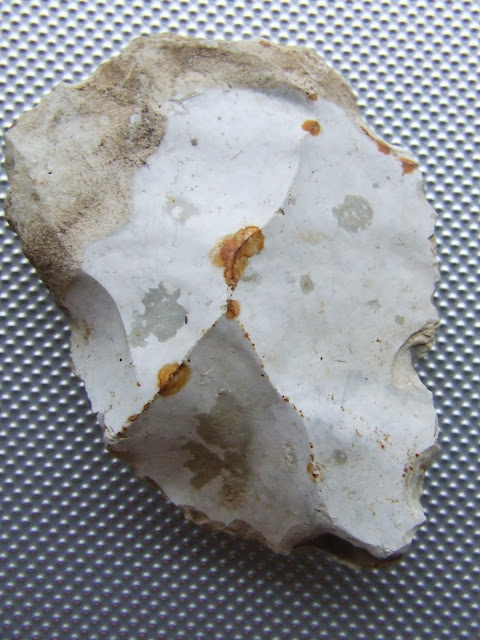As many of you will know, since very early in my prehistoric artwork discoveries I have put forward the view that my finds are a form of prehistoric communication, Palaeolithic visual language to be more precise. I have repeatedly demonstrated my glyph set, in worked stone and more conventional stone tool finds, not only in my collection, but in the finds of others, both amateur stone finds and professionally recognised finds and ancient tool assemblages from all over the world.
Due to mainstream resistance to such ideas I have repeatedly re-demonstrated, re-checked, and concentrated my efforts into scientific proof by demonstrating things that are re-observable, re-testable both in and outside my own evidence. Many of my followers have demonstrated the validity of my work by sharing there own finds that clearly fit my descriptions, topology, convention, glyph set, and world view, thank you.
I've not only put up with resistance in the mainstream, but also envy and deceitful behaviour from the very people who should be hailing my success, because they utterly failed to prove much of anything themselves really, so they attack.
So is the landscape about to change? well it looks like it with this article in Science Advances, as it could be seen to again support my own research in my Palaeolithic language discoveries as many of my glyphs and the concept 'ambiguous optical illusions' or the melding and conglomerating glyphs together seem present.
“We don’t know what they meant, but they’re clearly symbolic objects that were deployed in a way that other people could see them,” Said Professor Kuhn form this Article in Heritage Daily. This is where I can offer clarity if the modifications and markings on the shells are consistent with attempts to produce likenesses to my own well established common lexicon of symbols. Just look below for the front half's of elephants.
My followers will instantly see some plausible glyphs from my common set in the photo of the modified shells above. Simply these could easily work just like my definition of figure stones as visual communication tools and would take a lot less effort to modify and make, besides other advantages.
It's easy to conceive three of the most ubiquitous of the figure stone symbols in the shell on the left, elephant head and front leg (facing left), hand grip (thumb and finger joined at the bottom), Long necked water bird head reaching backward cleaning feathers (rotate 180 degrees CW). The shell on the right easily conveys the thumb motif, both clawed and nailed, also penis, and possible bear-half right facing.
Both could easily convey the water bird glyph also, beside others in the common set. These two both seem to have 'eye' modifications in the correct place to indicate that's a distinct possibility.
I've already contacted Professor Kuhn, the likeness to my glyphs and the ubiquity in world wide Palaeolithic tool assemblages from around the world to these shell is undeniable, and proving it would only require detailed analysis of the shells modifications, both removals and any additions of pigments.











